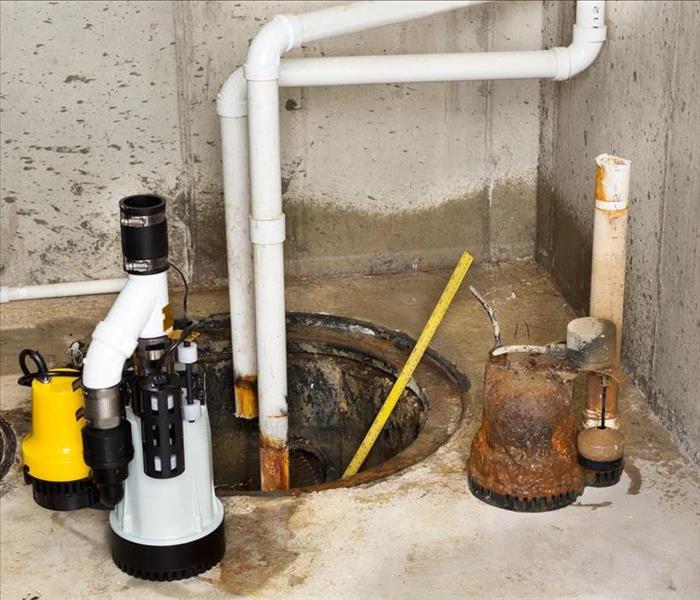5 Steps for Properly Maintaining Your Sump Pump
8/20/2021 (Permalink)
Water damage is one of the worst issues you may deal with as a homeowner, and anyone with a basement and a climate that involves a lot of rainfall may face flooding on a regular basis. A sump pump, however, provides a great solution. This device effectively moves water away from the home, even during power outages. If you want to be sure that the pump works and works well, you need to take a few steps to keep it in proper working condition.
Make sure that the pump is properly plugged into a ground fault circuit interrupter outlet. Inspect the cord regularly to catch and repair any signs of fraying or damage. Don't rely solely on your GFCI connection; a backup battery helps ensure the smooth operation of the pump.
Test the sump pump and the backup battery at least once a year. Slowly, pour a bucket of water into the pump. The device should activate when the water reaches a marked level. If it doesn't begin operating, there may be a clog, or it could be broken. If the pump does activate appropriately, test the battery by unplugging the pump and performing the same test.
Keep the components of the pump clean for efficient operation. This can be done simply by opening the lid and looking inside. (You may need a flashlight for this.) Clear out any debris, dirt, or other gunk. Be sure to check all vent holes, discharge pipes, and incoming and outgoing drainage lines to be sure that water can flow through them freely.
Update any old, worn-out parts. This step is particularly important if the sump pump has been used several times. The float switch is most likely to wear out and should be changed every two years, if not more often. Visually inspect the intake screen for clogs and for damage. This screen should be changed if you can see the damage. Experts recommend that the backup battery is replaced every two or three years; refer to the manufacturer's handbook. Finally, the pump itself may need to be replaced if several years have gone by. Most units last between seven and ten years, but some need to be changed out every five years because of heavy use.
Watch out for signs that your pump needs repairs. You may see rust on the pump itself or on any of the parts. If you can scrub away the rust, the pump will still probably work properly. If you can't, contact a professional for repairs or replacement. Don't ignore any musty, rotten smells that come from your basement. Pay attention to loud humming or banging noises. Any of these smells and sounds could be signs of damage or malfunction. If you find water, whether drips or pools, in your basement, the pump needs to be repaired.
If your sump pump fails, you could face a lot of expensive damage, in addition to the costs of hiring water damage cleanup and repair professionals. Routine pump maintenance is one of the best ways to protect your Colorado Springs, CO, home, and property from this situation.



 24/7 Emergency Service
24/7 Emergency Service
